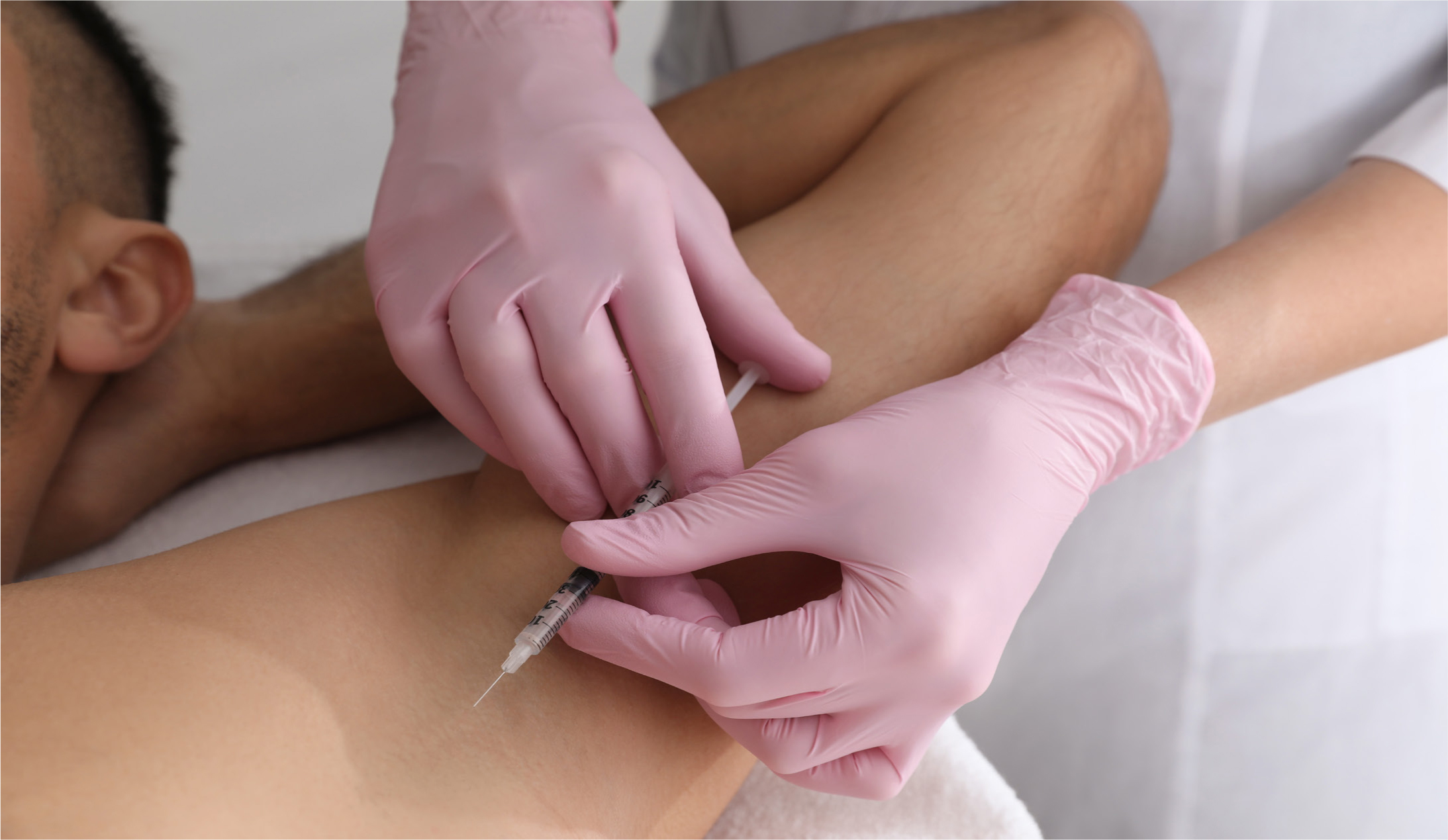
There is an emerging use of onabotulinum A (botulinum toxin A) in research that could propose an alternative, conjunctive or complementary treatment beyond first-line interventions for self-esteem and mental health (Kruger et al, 2022; Wollmer, 2012; Finzi et al, 2006). While current treatments for compromised mental health largely include psychosocial talking therapies, psychiatric medication or a combination of both (National Institute for Health and Care Excellence (NICE), 2011; Mind, 2023; Social Care Institue for Excellence (SCIE), 2012). Unfortunately, such treatments are not without negative side-effects (Cuijpers et al, 2020; Department of Health and Social Care, 2022; NICE, 2022). Treatment uptake also reveals many barriers to engagement that can even exacerbate inequalities (Bell, 2017). It is therefore imperative to consider opportunities to enhance understanding of complementary therapies, including the potential use of aesthetic medicine, their potential impact on the UK's economy and society, and how this might play a role in supporting the nation's health in order to take pressure off the NHS which is considered in the latest report of the All Party Parliamentary Group on Beauty and Wellbeing (APPGBW, 2023).
The emerging relationship between Botulinum toxin and mental health
Mental health problems are a growing public health concern and are becoming established as one of the main causes of the overall disease burden worldwide (World Health Organization (WHO), 2001; Whiteford et al, 2013). While occasional anxiety, low mood, temporary fear, lethargy and irritability is an expected part of life, in contrast, clinical anxiety, mood disturbance, sleeplessness and prolonged agitation can debilitate overall quality of life (QoL) and be disruptive to health (Vos et al, 2013; Lozano et al, 2012).
Finzi et al (2006) conducted one of the first studies to consider Botulinum toxin (BT) to treat depression. A small trial of 10 participants who met the Diagnostic and Statistical Manual of Mental Disorders (DSM)-IV criteria for ongoing major depression were assessed using the Beck Depression Inventory before BT was injected in the glabella frown lines. After eight weeks, 9/10 participants self-reported that their depression symptoms had been alleviated. This was later validated through clinical and psychometric assessment. The remaining participant reported to still having some symptoms, although they reported an improved mood overall (Finzi et al, 2006).
In 2012, Wollmer et al expanded upon these findings using a randomised double-blind placebo-controlled trial where all 30 participants had symptoms of depression and were receiving antidepressant medication. Half of the participants received BT and the other half a saline placebo injection at the glabellar frown lines. Participants were monitored over a period of 16 weeks. The findings showed that those receiving the BT injection reported a 47.1% decrease in symptoms at six weeks after a single injection. By comparison, the placebo group noted a 9.3% reduction. The primary endpoint was assessed by psychometric and clinical assessment. This study reported that BT may take up to six weeks to start having a noticeable effect on mood following a single treatment. This small yet significant effect is notably comparable to the effect time for a course of selective serotonin reuptake inhibitors (SSRIs), a common antidepressant treatment for mood related disorders (Wollmer et al., 2012).
A further study, (Hexsel et al, 2013) evaluated BT use in depression and found that a maximum therapeutic effect occurred within the first eight weeks. In 2014, a similar study evaluated patients' symptoms of depression every three weeks for 24 weeks and found that significant positive effects on mood were reported with researchers further suggesting that the mood altering effects of BT on the glabella region may exceed the cosmetic effect of 12-16 weeks (Magid et al, 2014; Costa et al, 2022). Proceeding these findings, Zamanian et al, (2017) explored the efficiency of concurrent BT use in glabella frown lines versus placebo in 28 patients with depression over six weeks. BT was administered alongside the participants' current antidepressant medication to reveal global improvement when compared with the placebo group.
Current theories of explanation
In 2016, a review of available research findings considered subjective appearance perception as a potential confounding explanation to the research findings (Zamanian et al, 2017). The investigation revealed that the severity of a person's frown line(s) did not impact the treatment outcome, and that people with very few frown lines still reported similar results to those that had deeper set frown lines. This has led researchers to consider that improved mood by appearance perceptions may be a limited explanation, and that other factors should be considered as improving mood in the studies (Finzi and Rosenthal, 2013).

Neuromuscular transmission
The importance of facial muscles in communication was first noted by Darwin in 1872 (Ekman, 2009). Facial muscles as communicators inform emotional experiences through the facial feedback loop. This ‘facial feedback hypothesis’ was first explained in the classic psychology ‘pen study’ in 1988, that demonstrated holding a pen in the mouth could inhibit or facilitate muscles typically associated with smiling (Strack et al, 1988) who explained that typically emotions such as fear, sadness, worry and anger result in the contraction of muscles on the forehead which form into the glabellar ‘frown’ lines. In people who are depressed, activity of the corrugator and procerus (muscles that cause these frowning lines) are increased (Lewis, 2018). Furthermore, as a neuromodulator, BT injections affect nerve signals to neuromuscular junctions of which facial musculature not only expresses, but also regulates mood states (Lewis, 2018). Therefore targeted obstruction of the muscles directly involved in the communication of emotions can disrupt the experience of ‘negative’ emotions and those typically involved in frowning, resulting in improved mood. Researchers have further noted that facial expressions and psychological state are closely linked, citing BT may work to reduce the intensity of emotions, thus mitigating a negative emotional experience and providing a strong and sustained alleviation of depression in patients, and this may be considered for ‘compassionate use’ even in those individuals who had not improved sufficiently on previous medication (Wollmer et al, 2021).
Neurotransmission
Kim et al (2014) suggested the feedback between muscles and the brain does not only work in the glabella region. Using functional magnetic resonance imagery (fMRI) they found that angry facial expressions increased amygdala activity. BT injections may therefore not only affect muscles, but also alter the emotional control centre in the brain (Makunts et al, 2020). In addition, Kruger et al, (2022) studied the brains of patients with borderline personality disorder (BPD), a condition linked to amygdala dysfunction. This novel study investigating the peripheral manipulations of emotional expression in an untreated mental health condition (BPD) involved 45 participants. Those treated with BT injection in the glabella region reported their symptoms associated with BPD (emotional instability, disturbed perception, cognitive distortion and impulsivity) significantly reduced at four weeks post-treatment. This was also demonstrated through fMRI, showing a reduction in amygdala activity. Researchers concluded that BT slowed the emotional neural transmission, alleviating symptoms of depression and BPD. The comparative group in this study received acupuncture. They also showed improved clinical symptoms; however, these were not reflected in the neuronal effects via fMRI examination. This study is believed to provide the first evidence that glabella BT injections may modify central neurobiological and behavioural aspects of BPD. Since the control treatment produced similar clinical effects, these neurobiological findings may be specific to BT and not a general correlate of symptomatic improvement. However, drawing generalised conclusions from this all-female sample where psychotropic and other medication use for comorbid disorders, including attention deficit hyperactivity disorder, was not controlled for, is limiting and should be treated with caution (Kruger et al, 2022).
Reduction in anxiety-inducing conditions or comorbidities
BT is commonly used in clinics to treat chronic conditions that may contribute to or have comorbid anxiety; therefore, successfully relieving the underlying problem may indirectly relieve anxiety. Weber et al, (2005) explored psychosocial aspects of patients with focal hyperhidrosis. Researchers concluded that a marked reduction of social phobia, anxiety and depression were all noted along with an increased QoL after treatment with BT. Makunts et al (2020) explored a dataset of 40,000 reports into the US Food and Drug Administration's (FDA) adverse effect reporting database. Within this surveillance study, patients had used BT injections for a variety of reasons. Findings showed that anxiety risk was 22–72% lower in BT-treated patients for half of the conditions and injection sites namely: facial muscles for cosmetic use; facial and head muscles for migraine; upper and lower limbs for spasm and spasticity; and neck muscles for torticollis. The data used in this study was not collected for the exclusive purpose of exploring the association between BT injection and anxiety, and it did not take into consideration those patients taking antidepressants, anxiolytics, or other prescription and over-the-counter medications that may target anxiety. The same research team, later in the same year published separate findings from the same dataset that showed people who received BT injections reported symptoms of depression significantly less than patients undergoing different treatments for the same condition (Wollmer et al, 2021). Both studies concluded that symptoms reduced regardless of injection site, which offers an alternative explanation beyond a patients' mood improvement due to having fewer wrinkles, or because BT prevents movement in muscles that promote frowning.
Unintended consequences
It has been proposed that BT may have a direct drug-related effect on biological functions and symptoms associated with mental health via infiltration of the blood–brain barrier (Dressler et al, 2005). The purpose of the blood–brain barrier is to protect against circulating toxins or pathogens that could cause brain infections, while at the same time allowing vital nutrients to reach the brain. It has been reported that direct central nervous system (CNS) effects are not observed by BT injection, given that BT does not cross the blood–brain barrier (Dressler et al, 2005). Yet, to the contrary, there is evidence to show that high-concentration of cosmetic or therapeutic injections of BT can cause iatrogenic botulism (Li et al, 2018). The negative effects of BT for cosmetic purposes are not fully understood and are largely unreported through the yellow card scheme (Medicines and Healthcare products Regulatory Agency, 2023). Given this precarious position, a new national survey looking at individual patient experiences of BT complications has now launched. This novel area of research, conducted by University College London in collaboration with The British Association of Aesthetic Plastic Surgeons and the Joint Council for Cosmetic Practitioners (JCCP), hopes to collate the largest data pool from patients to inform public consultation for regulation in England (University College London, 2023; link to current study in references).
Conclusions
It is imperative to the discussion about the use of BT for treating mental health disorders to gain insights from aesthetic medicine, while promoting a sense of wellbeing without exploitation. While investigators are considering the specific molecular mechanisms by which BT appears to reduce depression, anxiety and BPD, this is not fully known or understood. Trials are largely industry sponsored, and have few participants, of which the majority are female. With neither the point of administration or optimal dose specified, BT should only be used within its current insured and intended purposes. Any conclusive results at this stage should be treated with caution as the risk profile and reports of adverse effects requires robust, large scale, continuous study and consideration for improved patient selection and safe professional practice, specifically when making a determination on the nature of a patient's pathway of care (JCCP, 2021).



